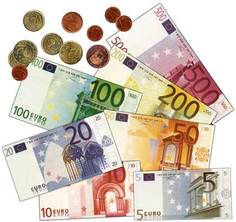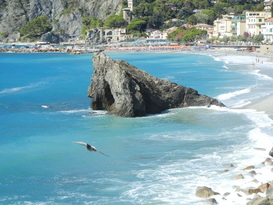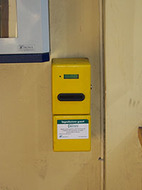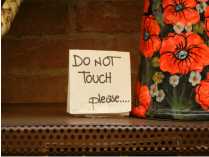
$$$$$ - Money Matters in Italy
The introduction of the euro tremendously simplified the understanding of currency in Italy. Prior to that, the lira was the official currency of Italy and it had so many zeros on the end, even an accountant would be hard pressed to keep it straight.
The euro also has made traveling from one European country to another virtually seamless. The euro has 7 denominations in paper bills of 5, 10, 20, 50, 100, 200 and 500 euro. Coins come in ‘cents’ of 1, 2, 5, 10 and 50, and also 1 euro and 2 euro.
It is always advisable to have about 100 euro in hand when arriving in Italy; just enough to get you to your hotel from the airport and get something to eat.
However, Italians have made it very easy for us to obtain cash while visiting their country. Leave your travelers checks at home and plan to use your ATM card or credit card whenever possible to be assured of the most current exchange rate and your known bank fee. ATM machines, displayed as BANCOMAT in Italy, are literally everywhere.
Below are some helpful currency tips when traveling in Italy:
The introduction of the euro tremendously simplified the understanding of currency in Italy. Prior to that, the lira was the official currency of Italy and it had so many zeros on the end, even an accountant would be hard pressed to keep it straight.
The euro also has made traveling from one European country to another virtually seamless. The euro has 7 denominations in paper bills of 5, 10, 20, 50, 100, 200 and 500 euro. Coins come in ‘cents’ of 1, 2, 5, 10 and 50, and also 1 euro and 2 euro.
It is always advisable to have about 100 euro in hand when arriving in Italy; just enough to get you to your hotel from the airport and get something to eat.
However, Italians have made it very easy for us to obtain cash while visiting their country. Leave your travelers checks at home and plan to use your ATM card or credit card whenever possible to be assured of the most current exchange rate and your known bank fee. ATM machines, displayed as BANCOMAT in Italy, are literally everywhere.
Below are some helpful currency tips when traveling in Italy:
- Make sure you have a 4 digit numerical pin number for your ATM card as there are no letters on BANCOMAT keypads.
- Notify your bank or credit card company that you will be traveling out of the country so they do not see unusual activity for you and shut the account down. Also take a phone number for the bank, and possibly the contact name of a person at the bank in the event that you need to call them from Italy.
- Do not carry large amounts of cash on you.
- Italy does have some issues with pickpockets, so protect your purse, backpack, or wallet, particularly when you are in a crowded area and the train stations. Beware that those pickpockets can also be children, working under the direction of an adult.
- The old 500-lire coins look very similar to the present 2 euro coin, so always check your change to keep the merchants honest.
- In snack bars, the price at the counter is less than if you sit at a table and are waited on. Eat lunch standing up at the counter bar and blend in with the locals to save a few euro.
- In some family owned B&B’s or shops, they might give a discount for cash, sometimes 5-10%. It never hurts to ask.
- Most small restaurants do not accept credit or debit cards, so check first.




 RSS Feed
RSS Feed